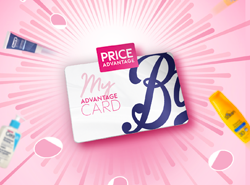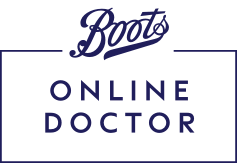Get contact dermatitis treatment to help manage your skin flare-up
FIND OUT MOREFind out how to take control of your symptoms
What is contact dermatitis?
Contact dermatitis is a type of eczema triggered by your skin coming into contact with a particular substance. This can be an irritant or allergen.
It causes the skin to become itchy, blistered, dry and cracked. Lighter skin can become red, and darker skin can become dark brown, purple or grey.
Symptoms can affect any part of the body, but most commonly the hands and face. Read more about the symptoms of contact dermatitis.
How can I reduce symptoms of contact dermatitis?
One of the most important steps in reducing symptoms of contact dermatitis is identifying (your GP will be able to help do this) and avoiding the irritants or allergens that affect you. If you can successfully avoid or reduce your exposure to the cause, your symptoms should improve and may even clear up completely.
It's not always easy to avoid irritants or allergens that affect you, but your pharmacist, GP or dermatologist can suggest ways to minimise your contact with things that trigger your condition.
If you can’t avoid contact with the allergens or irritants that cause your symptoms (if you’re exposed to them at work, for example), you can take steps to reduce the risk of them causing symptoms, including:
• Cleaning your skin – if you come into contact with an allergen or irritant, rinse the affected skin with warm water and use an emollient (more on these later) as soon as possible
• Using gloves to protect your hands – but take them off every now and again, as sweating can make any symptoms worse. You may find it useful to wear cotton gloves underneath rubber gloves if the rubber also irritates you
• Changing products that irritate your skin – check the ingredients on make-up or soap to make sure it doesn’t contain any irritants or allergens. You may need to contact the manufacturer or check online to get this information
There are also a number of treatments to help ease your symptoms if you’re not able to avoid the substance causing them.
How can contact dermatitis be treated?
Speak to your pharmacist if your contact dermatitis is troubling you. They can recommend treatments (such as emollients) for mild contact dermatitis, if appropriate.
Emollients
Emollients are moisturising treatments that you rub on your skin to reduce water loss and cover it with a protective film. They're often used to help manage dry or scaly skin conditions, such as eczema.
There are several different emollients available. You may need to try a few to find one that works for you. Your pharmacist may also advise you to use a mix of emollients, such as:
• An ointment for very dry skin
• A cream or lotion for less-dry skin
• An emollient to use instead of soap
• An emollient to use on your face and hands, and a different one to use on your body
Creams and lotions tend to be more suitable for daytime use as they don’t leave a greasy feel. Ointments are more suitable for areas of very dry skin and for nighttime use.
If you've been using a particular emollient for some time, it may eventually become less effective or start to irritate your skin. If this is the case, your pharmacist can suggest an alternative product.
Topical corticosteroids
If you have a flare-up of contact dermatitis and your skin is sore and inflamed, you may need a stronger treatment.
If suitable, your GP may prescribe a topical corticosteroid (a cream or ointment applied directly to your skin) that can quickly reduce the inflammation. If appropriate for you, a mild steroid cream to treat small areas of contact dermatitis can be obtained from your pharmacist.
Different strengths of topical corticosteroids can be prescribed, depending on the severity of your contact dermatitis and where the affected skin is.
You may be prescribed:
• A more potent cream for short-term use for severe contact dermatitis
• A milder strength cream if the eczema is mild
• A milder strength cream for use on your face, genitals or in the creases of your joints (such as your elbows), as your skin is thinner in these areas
• A more potent cream to use on your palms and the soles of your feet, as the skin is thicker here
Follow the directions on the Patient Information Leaflet that comes with your medicine.
If you’ve been diagnosed with contact dermatitis by a doctor, the Boots Online Doctor – Contact Dermatitis Treatment service* may be able to prescribe treatment to help manage a flare-up.
Topical corticosteroids will usually start to have an effect within a few days. Talk to your GP if you've been using a topical corticosteroid and your symptoms haven’t improved.
See your GP if you have persistent, recurrent or severe symptoms of contact dermatitis. They can try to identify the cause and suggest appropriate treatments.
Other treatments
If you have a severe episode of contact dermatitis and it covers a large area of your skin, your GP may prescribe a course of corticosteroid tablets.
Your GP is unlikely to prescribe repeat courses of corticosteroid tablets without referring you to a specialist, as they can cause side effects (such as high blood pressure, osteoporosis and diabetes) if taken often or for a long time.
If the treatments prescribed by a GP aren’t successfully controlling your symptoms, they may refer you for assessment and treatment by a dermatologist.
Further treatments that may be available from a dermatologist include:
• Phototherapy – where the affected area of skin is exposed to ultraviolet (UV) light to help improve its appearance
• Immunosuppressant therapy – medicines that reduce inflammation by suppressing your immune system
• Medicines licensed for particular types of severe eczema
*Treatments provided by Boots Online Doctor are subject to an online consultation to check suitability. Charges apply.









